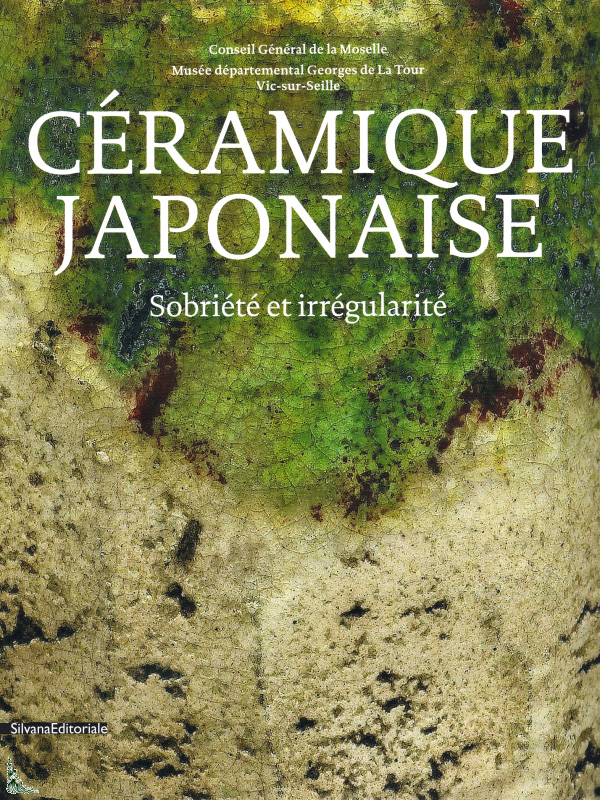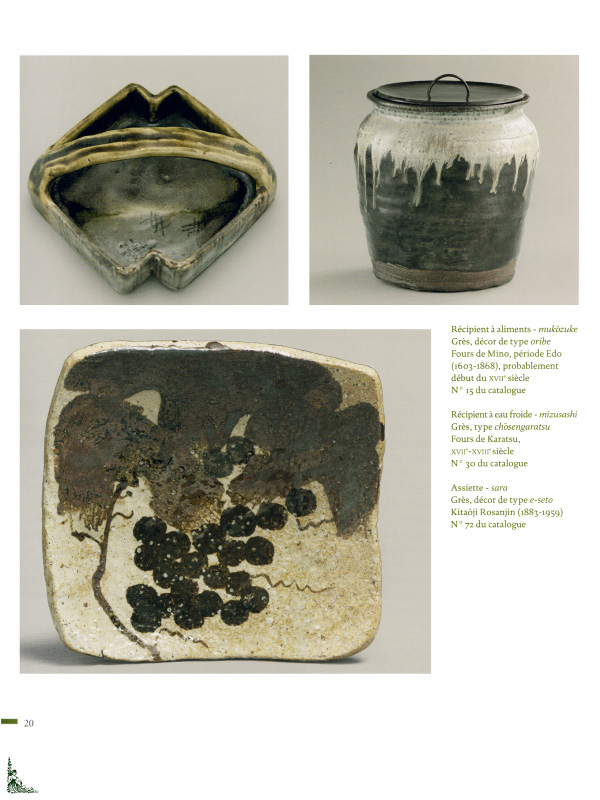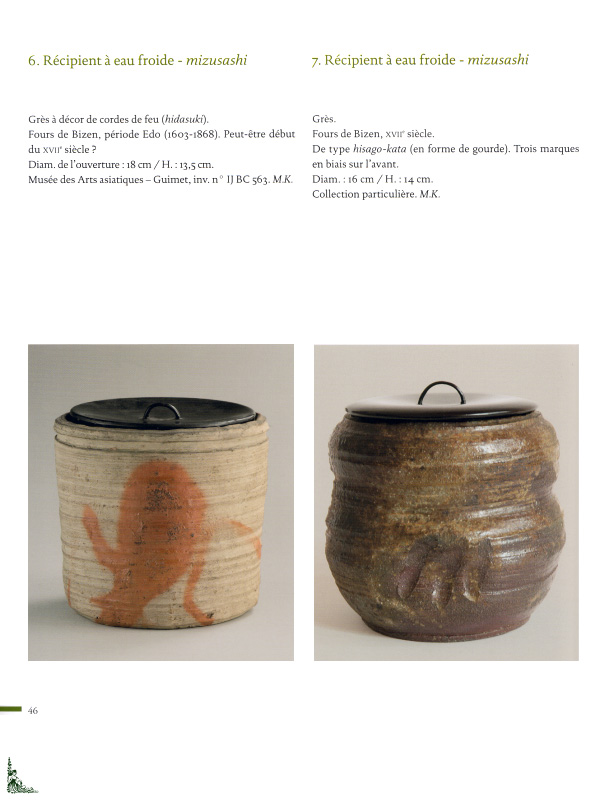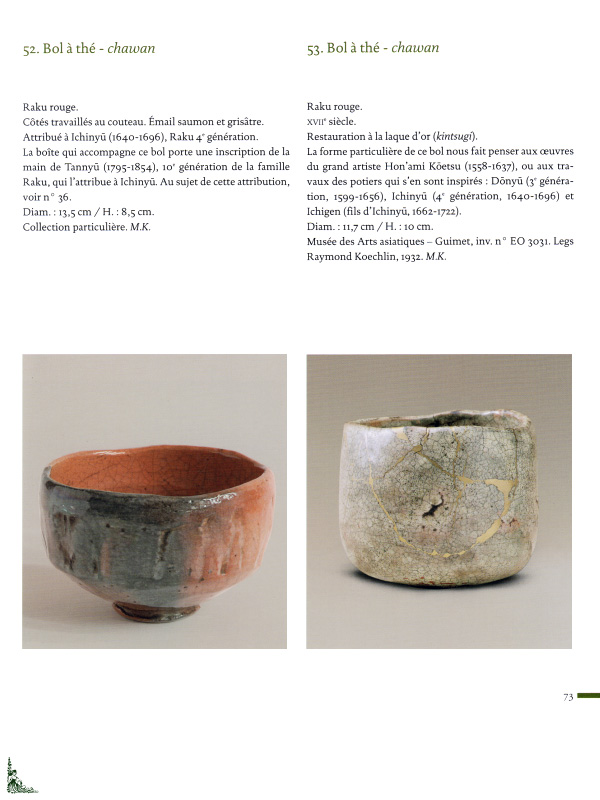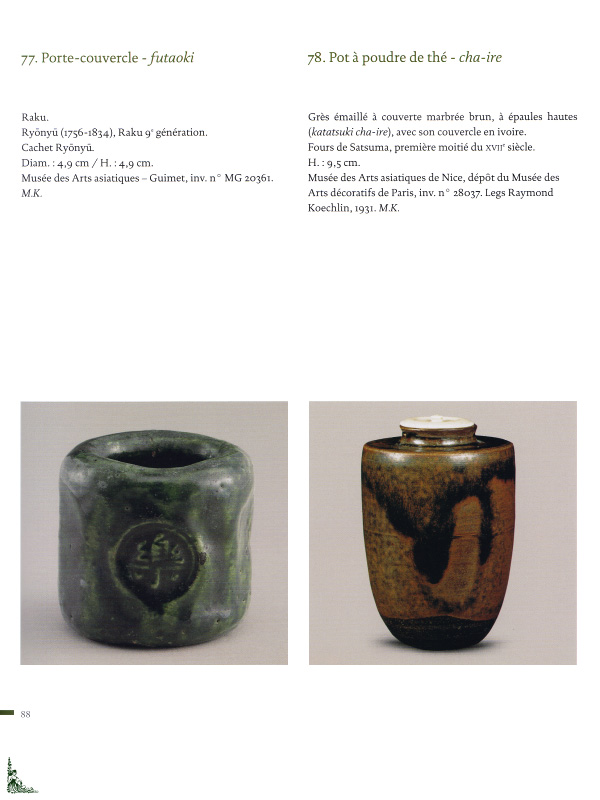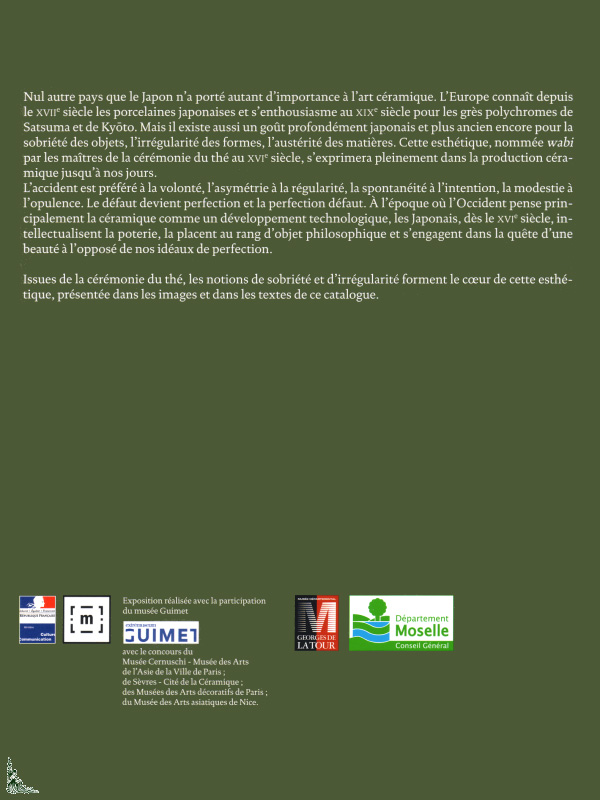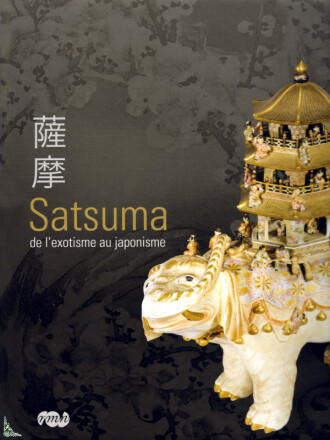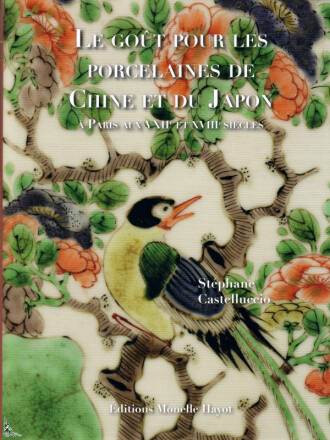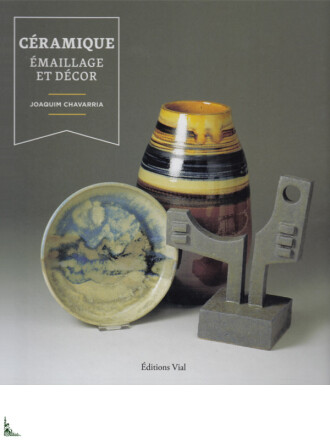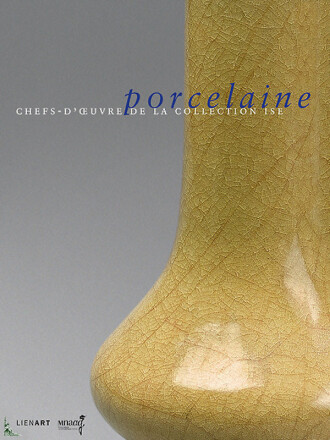Japanese pottery - sobriety and irregularity
この本の詳細
| 著者 : | |
| 出版業者 : | SilvanaEditoriale (2002) |
| 不良部分 : | Softcover (96 full color pages) 9 inches x 10 inches |
| 言語 : | French |
| ISBN : | 978-88-366-1819-4 |
| EAN : | 9788836618194 |
記述
Japanese pottery - sobriety and irregularity, Ed. SilvanaEditoriale, 9 inches x 10 inches ( 23 cm x 26 cm ), softcover book with 96 full color pages
This is a softcover book with 96 color pages with great illustrations that presents the Japanese pottery for the tea ceremony since the 16th century to nowadays.
This aesthetic, based on Zen Buddhist thought reflect the cult of the Japanese for nature, its power and its imperfection, as well as their love for the object, matter and hidden beauty.
The concept of wabi sabi means historically a taste for the emptying of objects. It reached its peak during the Azuchi Momoyama period (1573-1603).
The ideal of sobriety and irregularity is sought, together with a more sophisticated art through the centuries, even in contemporary art.
This book presents 87 pieces of ceramic for the tea ceremony from the 16th century to nowadays.
Fifty objects are made of sandstone, about thirty in the art and tradition of Raku dynasty, the direct heir of wabi sabi aesthetic ideals of the sixteenth century and currently represented by the 15th generation.
The texts are written in French.
 Description française
Description française
Céramique Japonaise - sobriété et irrégularité
Détails du livre
| Auteur : | |
| Éditeur : | SilvanaEditoriale (2002) |
| Reliure : | Broché (96 pages couleurs) 23 cm x 28 cm ( 9 inches x 10 inches ) |
| Langue(s) : | Français |
| ISBN : | 978-88-366-1819-4 |
| EAN : | 9788836618194 |
Description
Céramique Japonaise - sobriété et irrégularité, Ed. SilvanaEditoriale, 23 cm x 26 cm, broché avec 96 pages couleurs
Ce livre de 96 pages couleurs richement illustré présente l'esthétique du dépouillement dans la céramique de la cérémonie du thé du XVIe siècle jusqu'à nos jours.
Cette esthétique, fondée sur la pensée bouddhiste zen reflète le culte des Japonais pour la nature, sa puissance et son imperfection, ainsi que leur amour pour l'objet, la matière et la beauté cachée.
La notion de wabi sabi désigne historiquement un goût pour le dépouillement extrême des objets.
Il connaît son apogée pendant l'époque Azuchi Momoyama (1573 - 1603).
L'idéal de sobriété et d'irrégularité est recherché, parallèlement à un art plus sophistiqué à travers les siècles suivants, jusque dans la création contemporaine.
L'ouvrage présente 87 pièces de céramique de la cérémonie du thé, du XVIe siècle à aujourd'hui.
Une cinquantaine d'objets sont réalisés en grès, une trentaine dans la technique et la tradition de la dynastie Raku, héritière directe des idéaux esthétiques wabi sabi du XVIe siècle et représentée actuellement par la 15ème génération.
Les textes sont écrits en Français.


